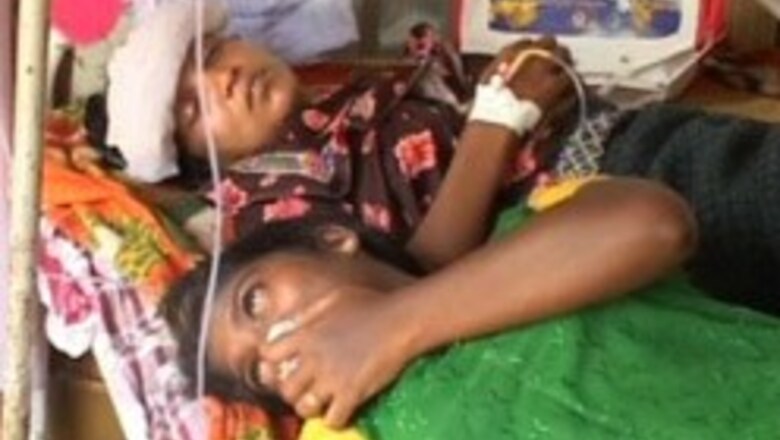
views
New Delhi: It has been a week now since the outbreak of the deadly viral disease chikungunya. Kerala has been hit hard with the virus claiming 52 lives.
In Maharashtra's Kolhapur district, 21 cases have been reported, 16 people have tested positive for chikungunya in Karnataka, and 10 people in Coimbatore district of Tamil Nadu.
Chikungunya has now arrived in Delhi with one case of the mosquito-borne disease afflicting a woman.
Last year, around 40 people in the capital had contacted the virus, while a total of 1,695 people from across the country were tested positive for the disease.
However, doctors say chikungunya is not a killer disease. Here's a lowdown on all you must know about the disease:
- Chikungunya fever is a rare form of viral disease characterised by fever, joint pains and spread by mosquitoes. It is caused by an alphavirus that is spread by mosquito bites from the Aedes aegypti mosquito.
- Though Chikungunya was not initially considered fatal, in 2005-2006, 200 deaths have been associated with the disease on Réunion island and a widespread outbreak in especially in Karnataka and Andhra Pradesh.
Symptoms:
- Chikungunya fever is characterised by high fever (101F-104F), headache, vomiting, malaise, severe joint pains including wrist, knees and ankles. The swollen and painful joints are painful to touch and are characteristic of this disease.
- They can last from a few days to few months. After 2-3 days of onset of fever a rash may be noticed over trunk and the limbs. The disease is self limiting and rarely fatal and unlike dengue fever the bleeding manifestation are not common in this disease.
- In the present epidemic in Andhra Pradesh, high fever and crippling joint pain is the prevalent complaint.
- Fever typically lasts for two days and abruptly comes down, however joint pain, intense headache, insomnia and an extreme degree of prostration lasts for a variable period, usually for about 5 to 7 days.
Treatment:
- There is no specific treatment for Chikungunya. The illness is usually self-limiting and will resolve with time.
- Symptomatic treatment is recommended after excluding other more dangerous diseases. A serological test is recommended.
Precautions:
- Keep covered. Wear full-sleeve clothes and cover the legs, especially at time of work, as it is a day-time mosquito which spreads the disease
- Cover all windows with mosquito preventive nets and apply mosquito repellents.
- Urge your local health authorities for urgent fogging of your area.
Recent cases:
- High density of Aedes aegypti was observed in the area. From 1-15 March, over 2000 cases of chikungunya have been reported from Malegaon town in Nasik district, Maharashtra.
- In Orissa state, India, 4904 cases of fever associated with myalgia and headache have been reported between 27 February - 5 March 2006. These signs are consistent with an arbovirus outbreak. Results of a biological investigation are awaited.
Last year’s figures:

















Comments
0 comment